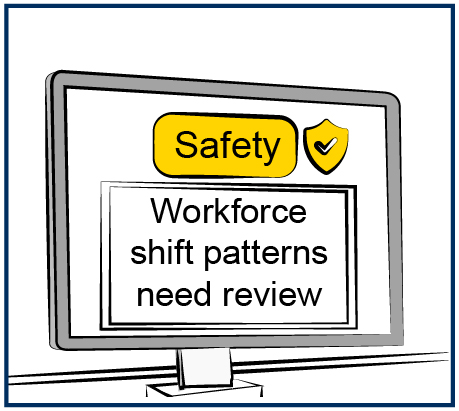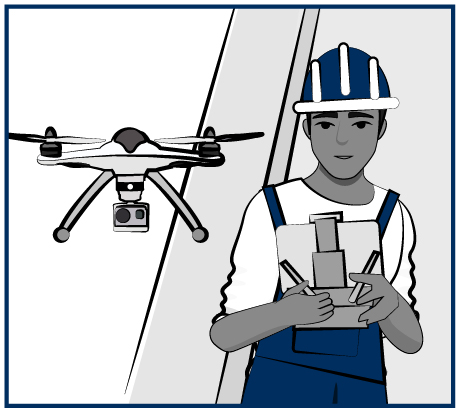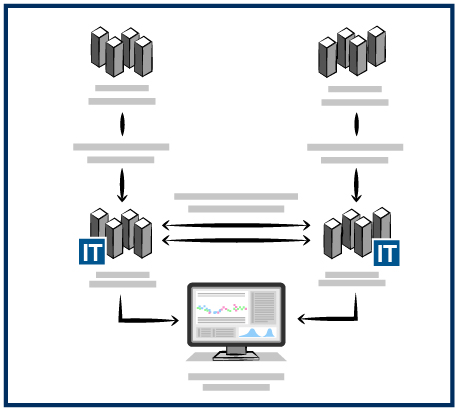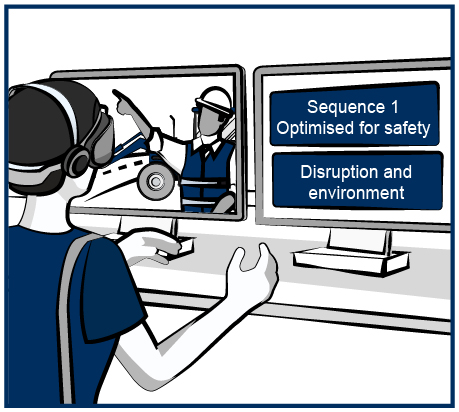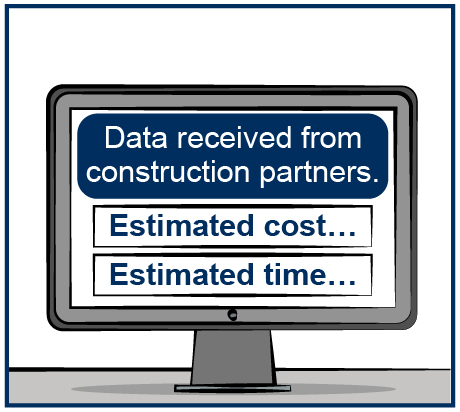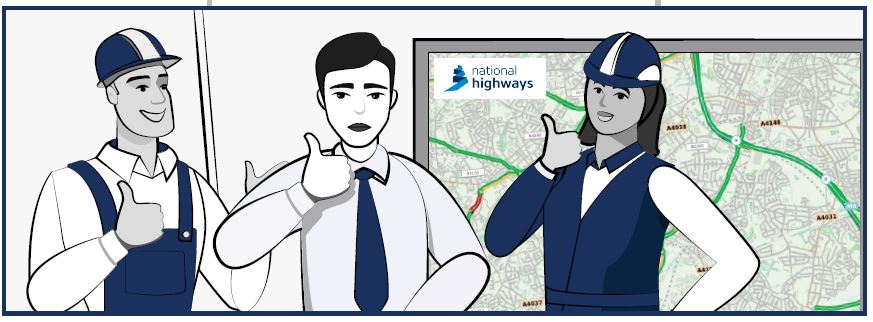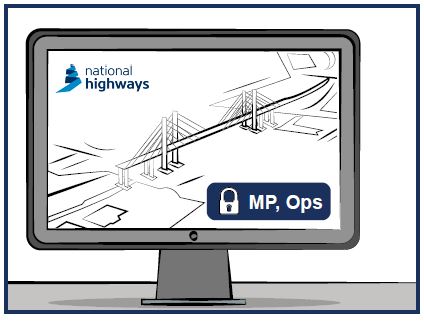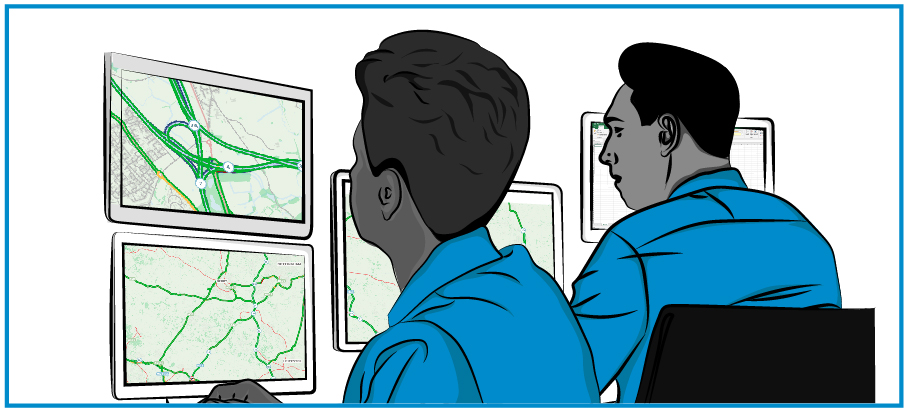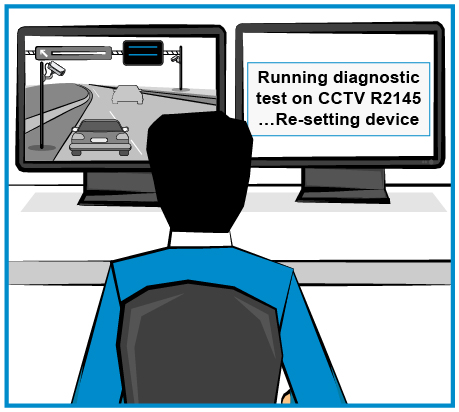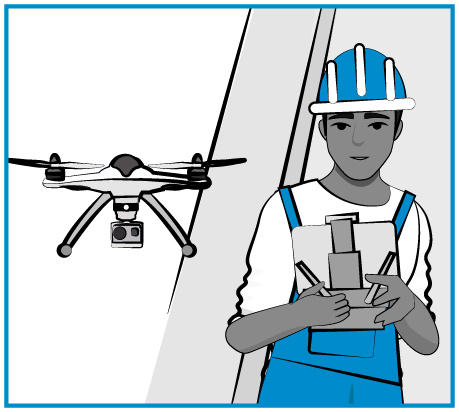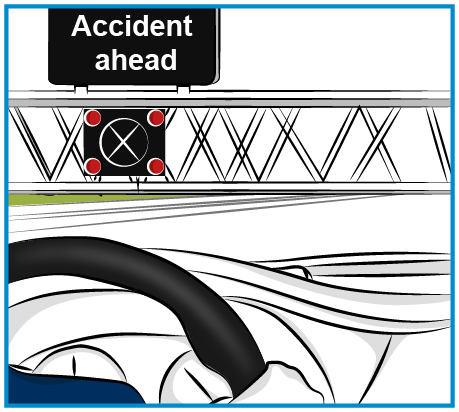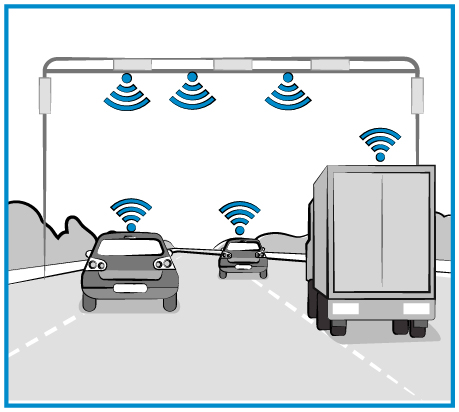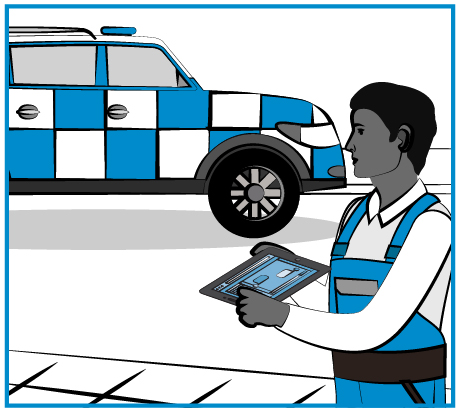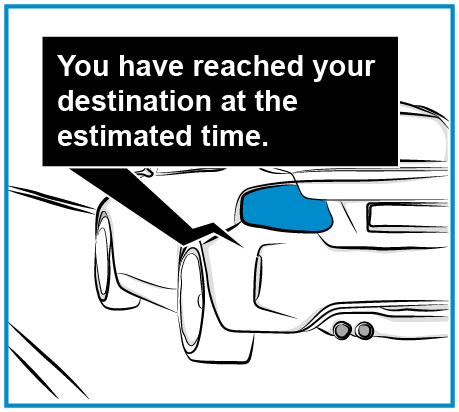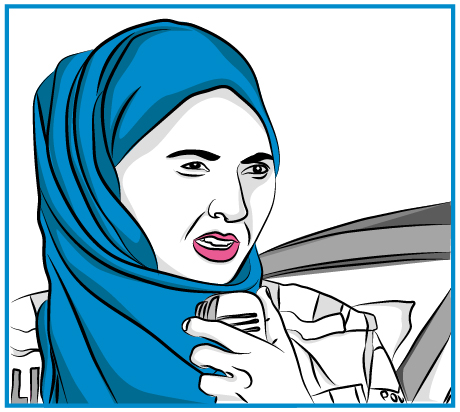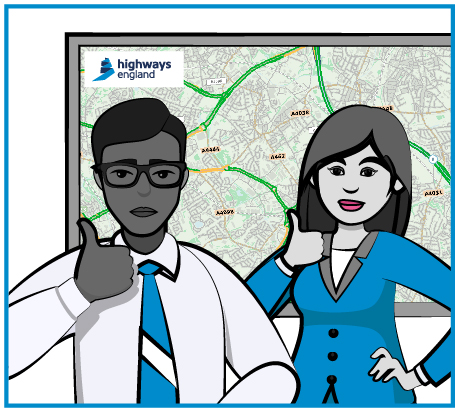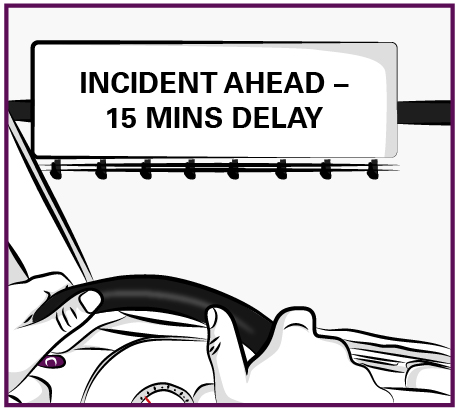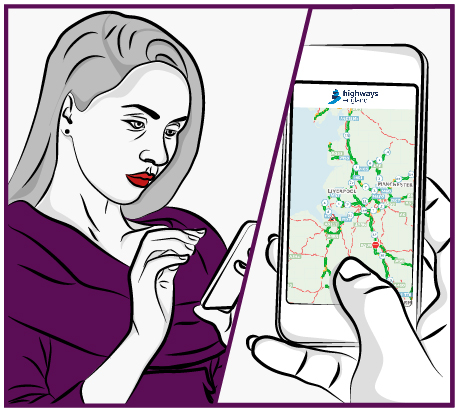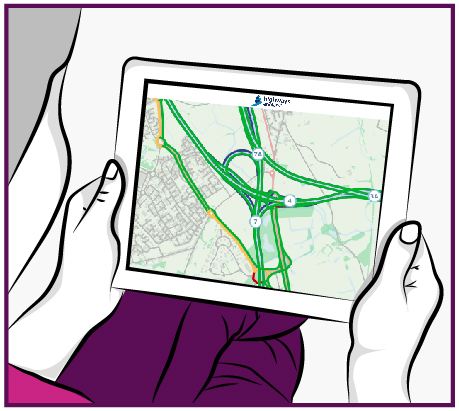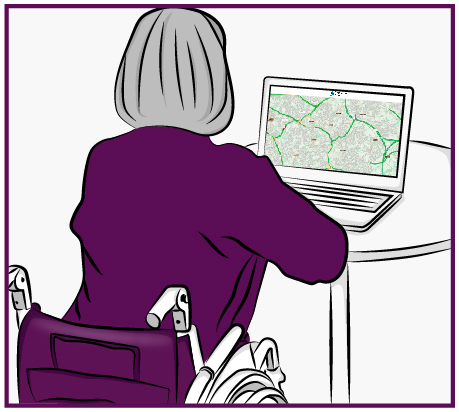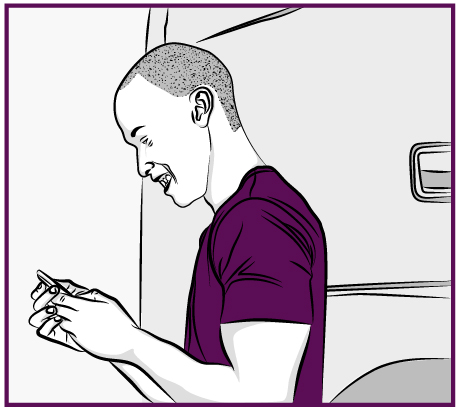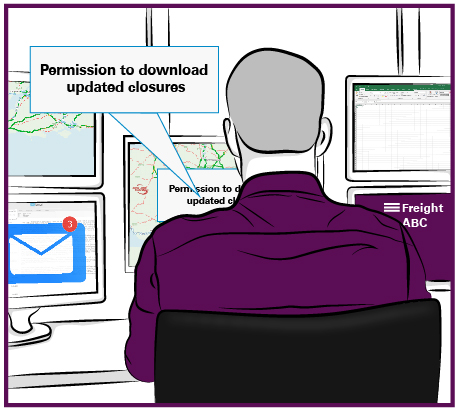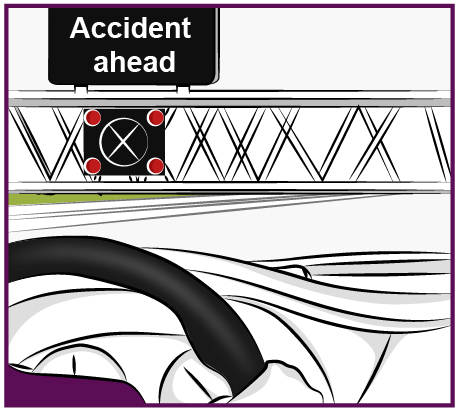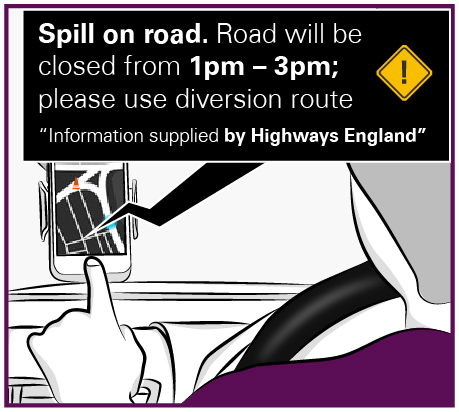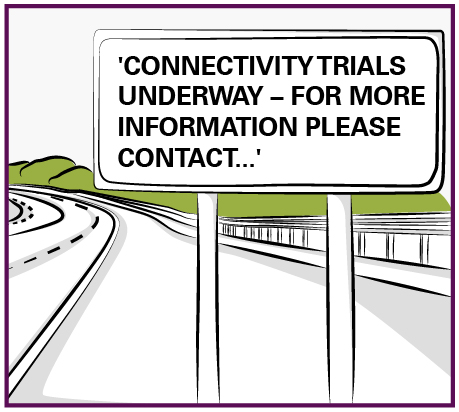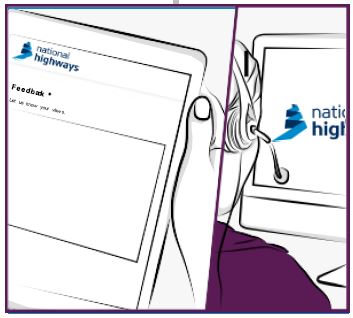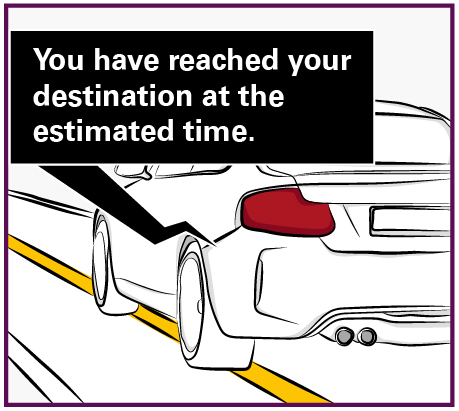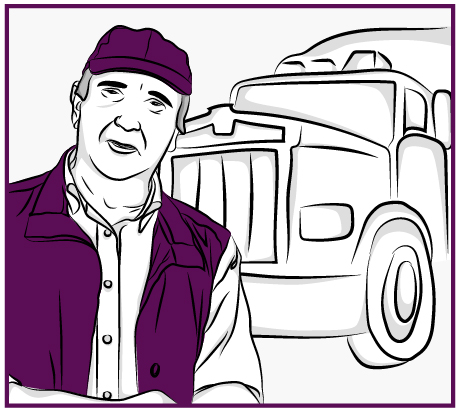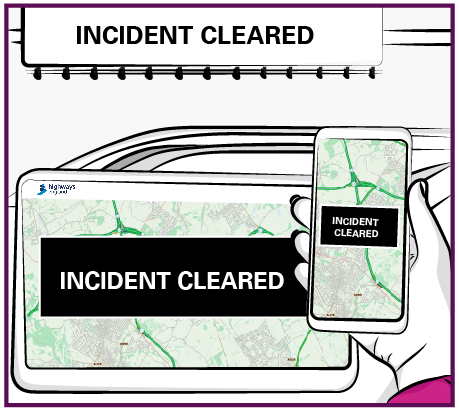Digital Roads will harness data, technology and connectivity to improve the way the Strategic Road Network (SRN) is designed, built, operated and used. This will enable safer journeys, faster delivery and an enhanced customer experience for all. Our vision and ambition for Digital Roads are aligned to achieving these outcomes.
Digital Roads represents a step-change in UK transport infrastructure and is at the heart of our long-term vision for the SRN. Our approach to Digital Roads considers how we can improve what we do today and in the future, embedding digital, data and technology in everything we do.
Digital Roads supports a wide range of Government policies and commitments, providing a common approach for realising shared strategic ambitions and supporting Britain’s growth.
Watch: our vision for digital roads 2025
Our vision
Our vision for Digital Roads is structured around three core themes:
"We are at the beginning of a digital revolution in roads infrastructure and expect to see more change in the next decade than we have in the last century. This provides an opportunity to make our roads safer, improve customer experience for all, and support our plans for net zero."Nick Harris, Chief Executive, National Highways
Visit our Digital Roads virtual learning environment
We've developed a virtual learning environment which includes additional material setting out our vision for Digital Roads. The environment also includes information on how we'll deliver our vision and the associated impacts on our customers, our employees and supply chain.
Digital Roads virtual learning environmentDigitally enabled design – Scheme designs, and long-term planning is based on fit-for-purpose data and enabled by digital tools. We integrate digitised design requirements, existing data feeds, digital design tools and digital twins, to enable safer, more efficient and greener outcomes.
Modularised and standardised approaches – The use of offsite fabrication and modular construction is increased and components are standardised. This improves safety, reduces carbon emissions and minimises disruption.
Automated construction – Digital rehearsals and the use of connected and autonomous plant are embedded in our construction processes, improving efficiency and enhancing safety.
Key benefits
- All our schemes are designed with the safety of our construction workers and customers in mind. Innovative and modern methods of construction will ensure all our sites are safer.
- The use of digital design tools will ensure that we get designs right the first time, reducing the need to make changes at later stages. The use of modular and off-site fabrication will reduce carbon emissions, shorten road closures and enable smoother customer journeys.
- Digital design tools will enable us to consider the environmental impact of our schemes and minimise carbon emissions where possible. Offsite fabrication and modular construction will also reduce waste and minimise carbon emissions.
Find out below what this will mean for engineer Ella Jones and construction worker Michael Sani, and view the timeline for improvements in design and construction.
Intelligent asset management – Data and technology is harnessed to enable predictive asset management. Better coordination of roadworks and the deployment of connected and autonomous plant will improve efficiency and reduce customer journey disruption.
Enhanced operational capability – Greater automation and network adaptability is enabled through the use of data and sensor technology. When the unexpected does happen, customer safety is enhanced, and traffic is managed efficiently.
Digitally enabled workers – Digitally enabled workers have access to accurate, up to date and consistent information, enabling them to do their work more efficiently and more safely.
Key benefits
- Digital surveillance techniques will reduce the need for human intervention and improve safety outcomes for our maintenance crews. Automatically detecting and responding to incidents will make our network safer for all.
- Using digital tools will enable better coordination of roadworks, reducing network disruption. Our enhanced control room and operational capability will enable us to optimise traffic flow, reducing congestion and emissions.
- Improved traffic flow will help to reduce carbon emissions on the SRN.
Find out below what this will mean for maintenance worker Georgie Smith and control room operator Mateo Garcia, and view the timeline for improvements in digital operations and maintenance.
Information provision – Our customers receive accurate, consistent, and close to real time journey information through their preferred digital channels.
Customer engagement – We receive better quality data from our customers, which informs our decision making and enables our call centre staff to provide excellent customer service. We enable the deployment of vehicle technology and connectivity, focusing on the benefits to customers.
Partnerships and alliances – We work with local highway authorities, transport operators, vehicle manufacturers and technology providers to improve customer experience and provide end-to-end journey support.
Key benefits
- Accurate, consistent, and close to real time information will enable road users to react to potential hazards in advance. Our infrastructure will support the uptake of connected and autonomous vehicle safety technology.
- Customers will receive improved information to support journey planning, keeping traffic free flowing.
- Improved information provision regarding the location and availability of charging infrastructure will support the uptake of low emission vehicles.
Find out below what this will mean for haulage driver Gary Baker and regular commuter Joyce Parsons, and view the timeline for improvements in customer experience.
Delivering Digital Roads 2025
We have also developed detailed plans required to achieve the Digital Roads 2025 ambitions, which are summarised below.
Many of these activities are already in-flight across our organisation and supply chain, and we are working closely together with our key stakeholders to deliver them.
Download the interactive roadmap for additional detail.
Examples of work already under way
Our long-term approach
Our journey does not stop in 2025 ... in fact it is just the beginning. Our Digital Roads vision for 2025 lays the foundations for our longer term vision to 2050 and supports the delivery of Connecting the Country.
Whilst we cannot predict the future, we are conscious of key emerging digital trends, in particular: data sharing, connectivity, and automation. These will shape the way we travel in the future and we are preparing for them today.
Digital Twin
A digital representation of a physical entity and its operation that can be queried. This will enable us to simulate our assets and improve our ability to design, construct, operate and maintain them with safety, customer and environmental outcomes at the forefront.
Connected Services
Connectivity is the use of technologies (e.g. mobile networks) to communicate with other cars on the road (vehicle-to-vehicle, V2V), roadside infrastructure (vehicle-to-infrastructure, V2I), and ‘Everything’ (V2X). This will enable smoother flowing traffic, reduced incidents and improved environmental outcomes.
Connected and Autonomous Vehicles
A fully autonomous vehicle is able to operate itself and perform necessary functions without any human intervention. This will enable smoother flowing traffic, reduced incidents and improved environmental outcomes.
Get involved
Delivering the benefits of Digital Roads will depend on the continued support and involvement of our stakeholders and supply chain partners. If you'd like more information, please email us: digitalroads@highwaysengland.co.uk
